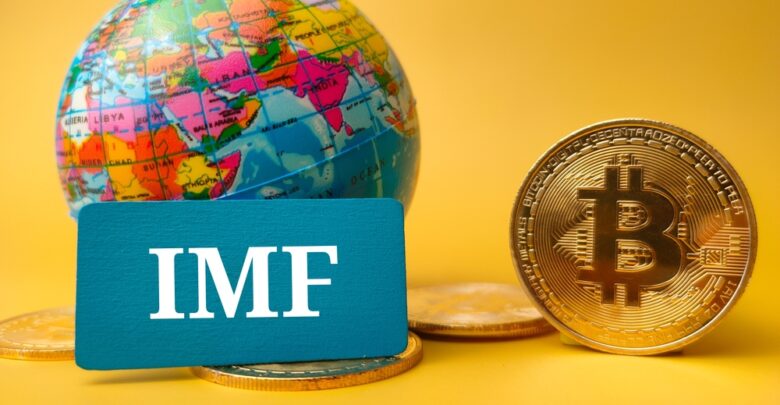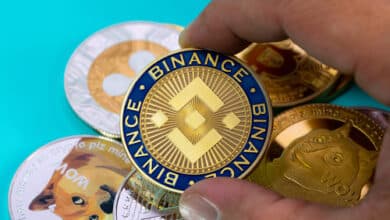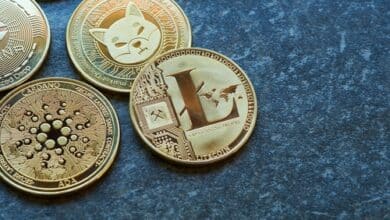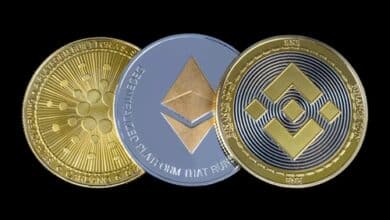IMF Explained: The Powerhouse Behind Global Finance

In this detailed Tokenhell guide, we’ll navigate the birth and growth of the IMF, highlighting its adaptability to the dynamic economic shifts and challenges since its establishment.
Emerging after World War II in 1944, the International Monetary Fund (IMF) has consistently been a pivotal element in the global economic structure. This exploration offers insights into the IMF’s transformation, duties, and profound impact on globalization.
We’ll trace the IMF’s roots, examining its metamorphosis in confronting evolving economic challenges and crises from the dissolution of the Bretton Woods system to modern times.
International Monetary Fund: Aims and Ambitions
The International Monetary Fund (IMF) stands as a beacon of global monetary collaboration, boasting a membership of 190 nations as of 2023.
The IMF’s core ambitions include the following:
- Championing global monetary collaboration via a steadfast institution.
- Encouraging the harmonious growth of international trade and resource development.
- Upholding exchange rate stability and fostering harmonious ties among member nations.
- Aiding in crafting a multilateral payment system and eradicating trade barriers.
- Instilling confidence in member nations by availing resources to rectify payment imbalances.
- Minimizing the duration and intensity of international payment imbalances.
IMF’s Genesis
In July 1944, the IMF was birthed during the United Nations Monetary and Financial Conference in Bretton Woods, New Hampshire, USA. In 1944, a gathering of 44 allied nations aimed to champion global economic collaboration to avert the economic missteps that precipitated the 1930s Great Depression.
Numerous nations adopted protectionist stances and trade barriers during this tumultuous period, exacerbating global economic turmoil.
As time progressed, the IMF’s membership burgeoned, technological and communication breakthroughs bridged global markets, and the international monetary framework underwent significant shifts, notably moving away from the Bretton Woods fixed exchange rate system in the 1970s. This transition empowered nations to select their preferred exchange rate systems.
Yet, the 1970s oil crises and heightened interest rates in developed nations ushered in a fresh international debt crisis, compelling many emerging nations to accrue debt from commercial banks at fluctuating rates.
The Berlin Wall’s collapse in 1989 catalyzed a swift growth in IMF membership, soaring from 152 to 172 nations within three years. The IMF was instrumental in steering former Soviet bloc economies from centralized systems to market-driven ones, offering counsel, expertise, and fiscal backing throughout the 1990s.
The new millennium saw international capital enabling numerous nations to settle their IMF debts and amass substantial reserves. However, the 2007 US housing market crash disrupted the equilibrium in capital flows for nations that had witnessed exponential growth since the 1980s.
This 2007 upheaval underscored vulnerabilities in mature markets, triggering the most severe recession since the Great Depression and a deluge of appeals for IMF assistance. The IMF augmented its resources to a staggering $750 billion to counteract this crisis, revamped its lending strategies, and launched adaptable credit avenues and funds tailored for economically disadvantaged nations.
IMF Responsibilities
The primary role of the IMF encompasses supervising the global monetary system and executing various duties. These include offering credit to member nations with temporary balance of payments deficits, scrutinizing its members’ monetary and exchange rate strategies, and providing economic policy guidance.
Thus, the IMF undertakes these responsibilities:
- Oversight Responsibility: It upholds the guidelines in its Articles of Agreement.
- Economic Assistance: It allocates resources to address short to medium-term balance of payments discrepancies.
- Advisory Role: The IMF is a hub for global collaboration and a reservoir of technical counsel for its members facing economic challenges.
IMF Organizational Framework
The administrative hierarchy of the IMF is segmented as follows:
- Board of Governors: This apex decision-making entity of the IMF consists of a governor and an alternate from each member nation. While it delegates many of its powers, it retains crucial rights, such as sanctioning quotas and determining the induction of new members.
- Advisory Ministerial Panels: The Board of Governors garners insights on worldwide economic and developmental matters from two key panels: the International Monetary and Financial Committee (IMFC) and the Development Committee. These panels convene biannually, outlining directives for the IMF’s forthcoming six-month agenda.
- Executive Board: Its 24 members oversee the IMF’s routine operations. They deliberate on all facets of the IMF’s agenda, typically reaching decisions through consensus, though formal voting does occur. Initially, the top five quota-holding nations had the privilege to nominate an Executive Director, while the others elected the remaining 19.
- Managing Director: Chosen by the Executive Board, the Managing Director chairs the Board’s sessions. As the administrative leader of the IMF’s specialized and auxiliary staff, this individual is supported by three Deputy Managing Directors.
- Expert Team: This team, primarily stationed at the Washington, D.C. headquarters, comprises economists and specialists. Their analyses and suggestions are pivotal for the Executive Board’s decision-making.
IMF’s Influence on Global Integration
The IMF, as a steadfast entity for global monetary collaboration, seeks to bolster the cohesion and resilience of the world economy.
In this pursuit, the institution advocates for equitable foreign trade growth and enhancing productive prowess among its members. Concurrently, the IMF endorses robust exchange rate systems globally to avert drastic shifts that might upset economic ties.
Moreover, it aids the escalating amalgamation and mutual reliance of nations and global marketplaces, termed “globalization.” This intensified amalgamation, propelled by tech innovations, offers economic prospects and brings potential hazards like global financial upheavals.
Hence, a core mandate of the IMF is to track systemic threats and assist member nations in implementing robust macroeconomic and fiscal strategies to mitigate the transnational repercussions of crises.
Final Thoughts
The IMF is pivotal in shaping the global economic landscape, fostering global synergy in monetary and fiscal domains. Through its roles in oversight, funding, and expert guidance, it aspires to cultivate financial robustness, economic expansion, and poverty alleviation among its affiliates.
Despite facing critique for specific adjustment initiatives, the IMF has endeavored to enhance its transparency and accountability, ensuring more inclusive participation of member nations in framing their economic strategies.
Like all financial bodies, the IMF’s ongoing challenge is to adeptly evolve with technological advancements to navigate the complexities of an evolving global landscape.
Tokenhell produces content exposure for over 5,000 crypto companies and you can be one of them too! Contact at info@tokenhell.com if you have any questions. Cryptocurrencies are highly volatile, conduct your own research before making any investment decisions. Some of the posts on this website are guest posts or paid posts that are not written by Tokenhell authors (namely Crypto Cable , Sponsored Articles and Press Release content) and the views expressed in these types of posts do not reflect the views of this website. Tokenhell is not responsible for the content, accuracy, quality, advertising, products or any other content or banners (ad space) posted on the site. Read full terms and conditions / disclaimer.





